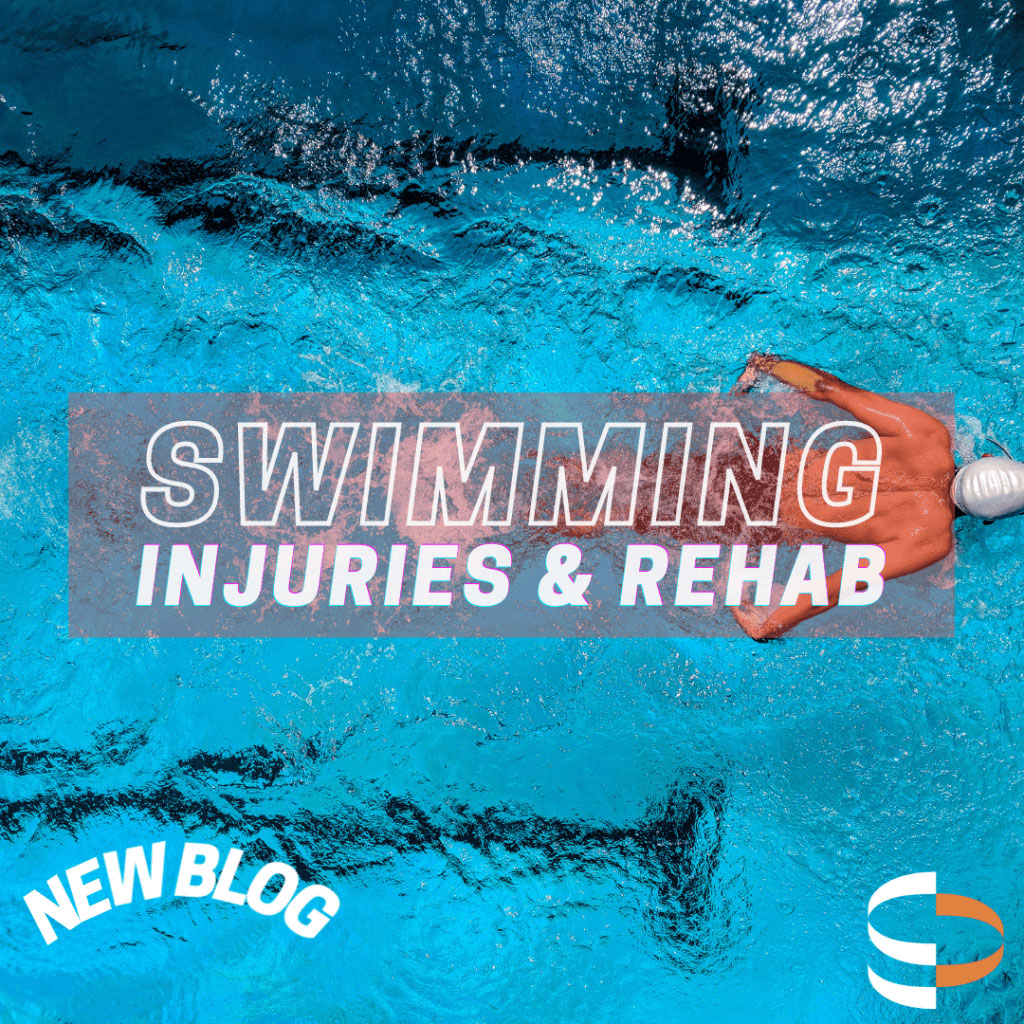It’s the middle of Summer and getting in the water is a must!! Whether you are taking swimming lessons, doing some laps in the pool or heading to the beach, swimming is not only a fantastic full-body exercise, it’s a great way to cool off and have fun!
For those first timers, or even the most experienced swimmers, injuries can occur in the water. Frustratingly however, these injuries are most often noticed midway or after the session. This means you can be swimming along feeling great, and a slow gradual pain starts to grow and eventually forces you to stop and get out.
This blog helps you to identify what may be going wrong, how to modify your training and how to get those most out of your time in the water!
Swimming Training Error or Overload
Due to the repetitive nature of swimming and a goal for many swimmers to increase training distance, it is common for swimmers to overload their bodies by pushing too quickly, resulting in overtraining.
Once the body is pushed to a point of muscle fatigue, stress is transferred to the tendons (muscle-bone connections) and the joint they are moving. These structures although quite sturdy can progressively become a source of pain.
Swimming training errors may also include the use of equipment like pool buoys or paddles. These will alter the load to particular areas like the shoulders, although this can be useful to improve strength without increasing distance, it may result in injury when used too aggressively or prematurely.
When swimmers progress training too rapidly, without allowing for general conditioning, injury is likely to occur. Therefore, it helps to have a Physiotherapist to help guide training quality over quantity.
The Swimming Shoulder
BY FAR the most common swimming injury, shoulder pain! The shoulder generates the most power during swimming than any other body part, therefore endures the most stress and is at greatest risk of injury.
The shoulder joint itself is quite complex, with multiple controlling muscle groups and a variety of movements during swimming. The Rotator Cuff is a common source of pain or weakness when considering a swimming shoulder injury. Strengthening it can be easy, however, often takes time and education about stroke technique to reduce future overload.
Interestingly shoulder blade movement is not often considered enough with respect to swimming technique and overload. When fatigue increases, the movement of the shoulder blade often reduces and can result in impingement & pain.
An easy way to de-load the shoulder during training and maintain distances is the use of fins and increase kick sets.
The Swimming Spine
When considering spine related injuries in the water that aren’t a result of someone diving into shallow water, we often look to the neck and upper back.
Both areas are linked to shoulder and trunk mobility or breathing. Neck rotation or extension for breathing is incredibly important. When the surrounding muscles fatigue, the load can transfer to spine joints and result in increased stiffness or pain, leading to neck, upper back, or even low back pain.
Furthermore, when the shoulders begin to fatigue, trunk rotation and extension are reduced. This forces the spine and associated muscles to increase workload and assist in generating mobility, which may result in injury. Interestingly this relationship goes both ways, if the trunk/spine is not moving efficiently, the shoulder will have to generate greater loads and may result in injury.
The Swimming Hip
Aside from breaststroke, the hip is not often considered a pain source in swimming with minimal required movement. Anterior hip pain however is quite common and can be often linked to poor stability around the core and pelvis.
Breaststrokers require good hip mobility and stability muscle strength to generate powerful kicking techniques. Without good mobility and stability throughout the hip joint, this can lead to pain further up or down the chain, eg. swimmers back pain, or knee pain. Along with this, when pushed to the limits these muscles or the joints they attach to may become a source of pain.
Addressing hip and glute stability along with core strength is important when dealing with hip pain.
Calf Cramps
An uncomfortable and usually unexpected source of discomfort for swimmers is the dreaded calf cramp. We often see this during kick sets, using fins or when someone who cross-trains with running is in the pool.
Due to the sustained extended foot and ankle position during kicking, the calf muscle is activating in a shortened position and is at risk of fatiguing quickly. This can result in the intense tightening discomfort known as a cramp.
Applying gentle stretches and mobility both in and out of the water are easy ways to reduce immediate discomfort, however long-term training changes or loading should be considered, as well as strengthening.
Swimming Physiotherapy and Pilates
The goal of all great Swimming Physios is to keep the swimmer in the pool. This can be done by modifying current training loads and increasing dry land preparation and strengthening to prevent further injury. The use of equipment like fins, paddles and pool buoys is a handy way to assist this strategy.
Identifying problems with training load and technique are not quite as easy. Leaders Sports & Spine Physiotherapy in Brisbane’s CBD is fortunate to have 2 previously National Level Swimming Physiotherapists to help guide your current injury management and get the most out of your training program and your technique.
Pilates has also emerged as the most recommended swimming injury treatment and prevention strategy when considering swimming cross-training. Days of the beefed-up swimmer are at an end as fast lean bodies break records. Pilates will target all of the aforementioned at-risk muscles and joints for swimming. Leader’s Physiotherapists are trained Pilates instructors who can create swimming-specific Pilates programs.






